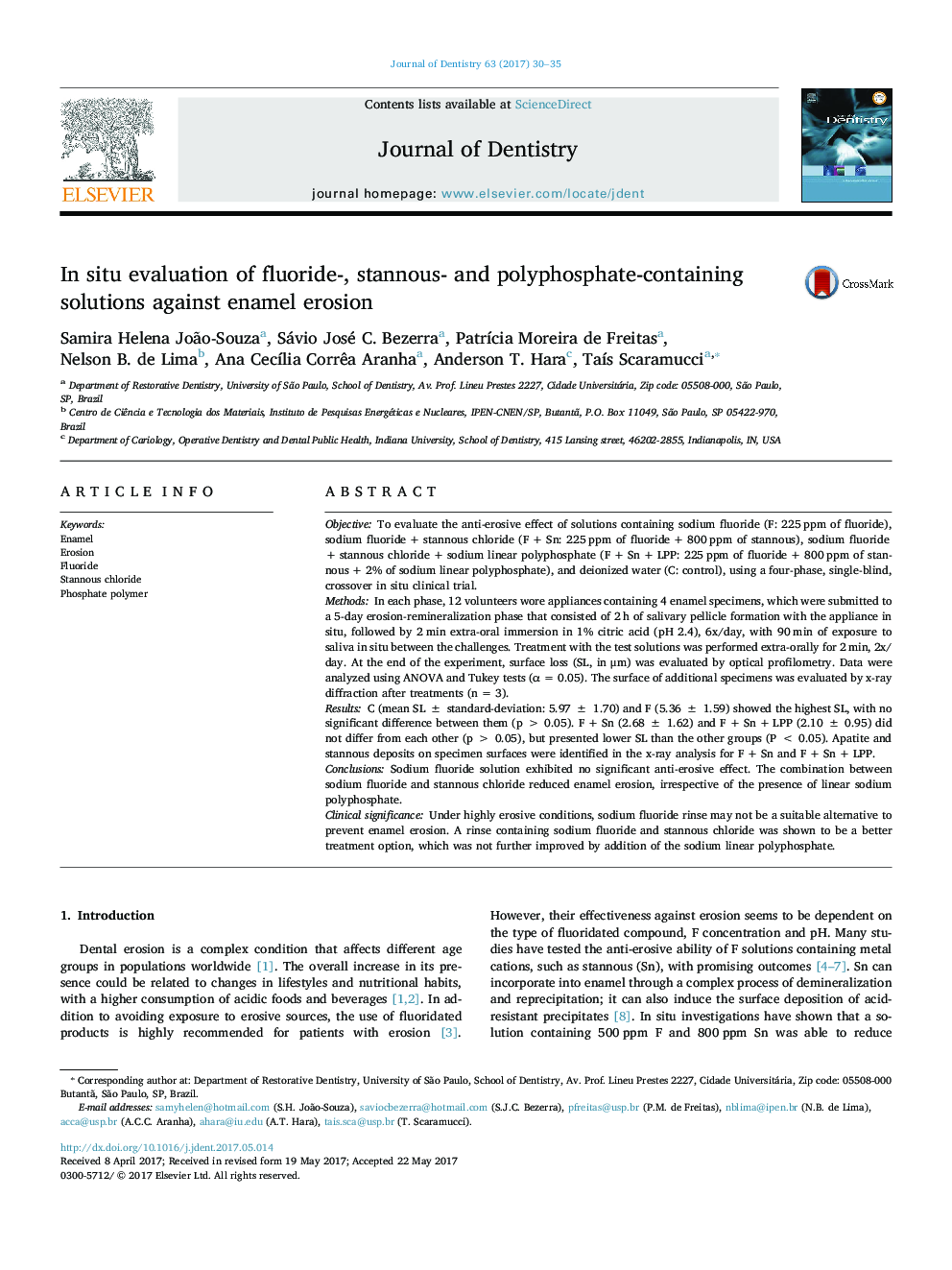| کد مقاله | کد نشریه | سال انتشار | مقاله انگلیسی | نسخه تمام متن |
|---|---|---|---|---|
| 5640563 | 1585466 | 2017 | 6 صفحه PDF | دانلود رایگان |
ObjectiveTo evaluate the anti-erosive effect of solutions containing sodium fluoride (F: 225 ppm of fluoride), sodium fluoride + stannous chloride (F + Sn: 225 ppm of fluoride + 800 ppm of stannous), sodium fluoride + stannous chloride + sodium linear polyphosphate (F + Sn + LPP: 225 ppm of fluoride + 800 ppm of stannous + 2% of sodium linear polyphosphate), and deionized water (C: control), using a four-phase, single-blind, crossover in situ clinical trial.MethodsIn each phase, 12 volunteers wore appliances containing 4 enamel specimens, which were submitted to a 5-day erosion-remineralization phase that consisted of 2 h of salivary pellicle formation with the appliance in situ, followed by 2 min extra-oral immersion in 1% citric acid (pH 2.4), 6x/day, with 90 min of exposure to saliva in situ between the challenges. Treatment with the test solutions was performed extra-orally for 2âmin, 2x/day. At the end of the experiment, surface loss (SL, in μm) was evaluated by optical profilometry. Data were analyzed using ANOVA and Tukey tests (α = 0.05). The surface of additional specimens was evaluated by x-ray diffraction after treatments (n = 3).ResultsC (mean SL ± standard-deviation: 5.97 ± 1.70) and F (5.36 ± 1.59) showed the highest SL, with no significant difference between them (p > 0.05). F + Sn (2.68 ± 1.62) and F + Sn + LPP (2.10 ± 0.95) did not differ from each other (p > 0.05), but presented lower SL than the other groups (P < 0.05). Apatite and stannous deposits on specimen surfaces were identified in the x-ray analysis for F + Sn and F + Sn + LPP.ConclusionsSodium fluoride solution exhibited no significant anti-erosive effect. The combination between sodium fluoride and stannous chloride reduced enamel erosion, irrespective of the presence of linear sodium polyphosphate.Clinical significanceUnder highly erosive conditions, sodium fluoride rinse may not be a suitable alternative to prevent enamel erosion. A rinse containing sodium fluoride and stannous chloride was shown to be a better treatment option, which was not further improved by addition of the sodium linear polyphosphate.
Journal: Journal of Dentistry - Volume 63, August 2017, Pages 30-35
